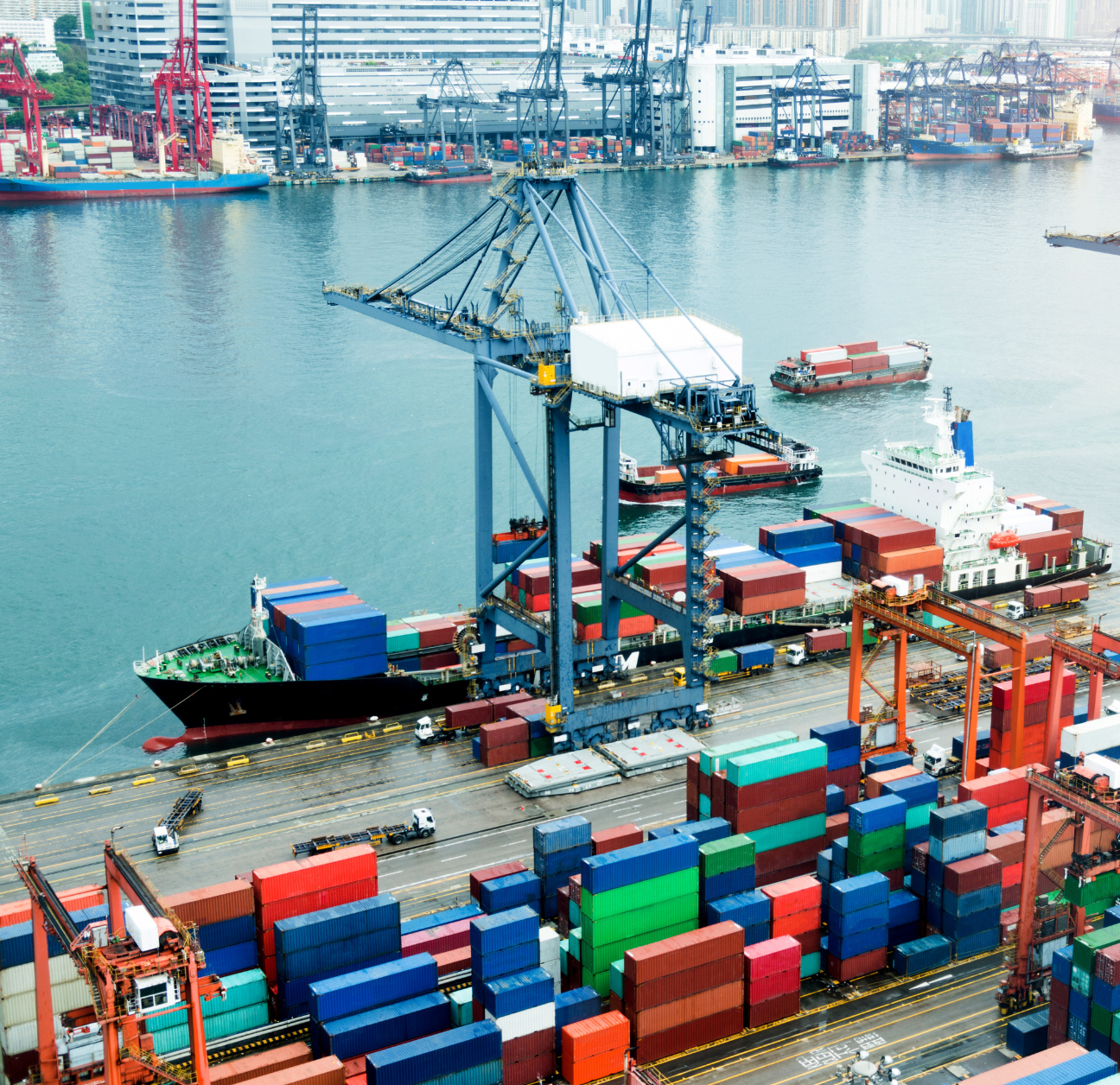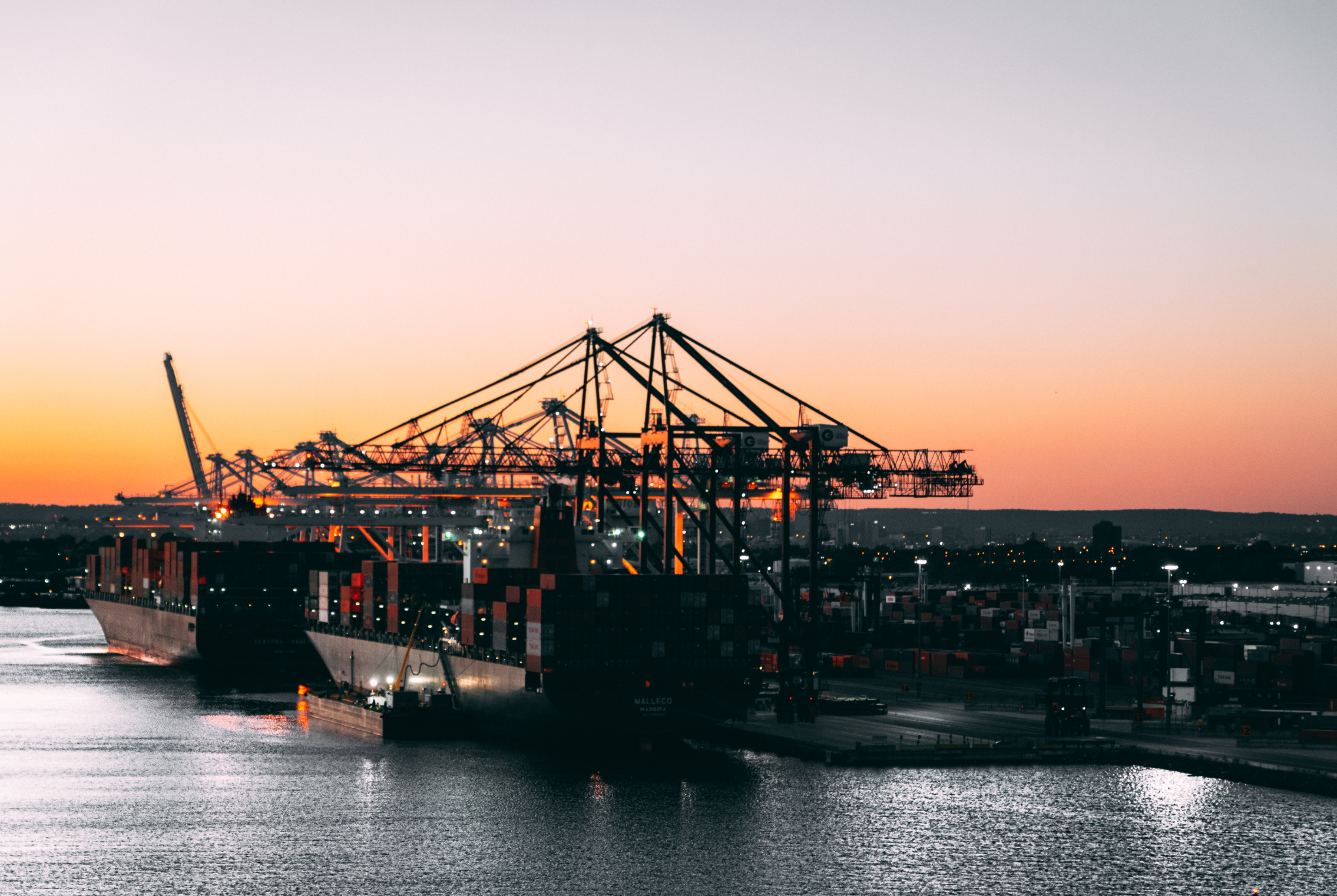We've completed logistics and supply chain automation projects in weeks that our customers were told would take months. We finish integrations fast, freeing up resources to focus on innovation and service without bogging down internal IT teams.
Supply Chain Automation
Supply chain automation is the use of modern technologies to automate tasks that are traditionally manual. So what is supply chain automation, specifically? Automation in the logistics industry can look like warehouse robotics, the Internet of Things, artificial intelligence, machine learning, digital process automation, optical character recognition, and even data integrations. Automation in logistics and supply chain management is meant to increase efficiency and reduce costs. Supply chain management tools can help businesses automate manual tasks, especially processing documents and data. Paperwork is rarely anyone’s favorite part of any process, and using an automation tool can streamline documentation and leave employees to more important tasks.
Supply chain automation tools can also increase visibility and transparency in the supply chain, something that’s extremely important. Increasing supply chain visibility doesn’t only mean that it’s clearer to customers where a product is at any given moment but also to employees. Good supply chain visibility enabled by automation allows employees in different departments and locations to be able to track any project from beginning to end. This visibility allows errors to be caught and remedied faster, preventing serious disruptions.
Automation also gives the supply chain industry access to accurate and actionable data. Manually recording and reporting data can take a lot of time and is prone to human error. Automated data recording and reporting can help bust data silos and ensure that the people who need access to accurate data have it whenever they need it. Demand planning is enabled by reliable data, and something like an automatically generated report can help leaders make the best decisions sooner.
Many supply chain professionals are moving towards automation as technology improves and becomes more accessible. Continuing to handle all systems and tasks manually is becoming unsustainable for the growth of many supply chain companies. Automation began to trend in 2022 but has been predicted as a major trend for 2023, with 41% of supply chain companies planning to acquire or already having acquired supply chain automation tools within the next 12 months.
Supply Chain Automation Examples
Many companies using automated supply chain management are using it for reporting and data processing. AI and machine learning supply chain automation software, such as optical character recognition tools, can learn and recognize documents, sorting and filling them in as appropriate. This saves a lot of time when it comes to repeatable processes such as invoices. There are many other kinds of automation in supply chain examples, such as warehouse automation and robotics. In the unhappy event of a supply chain disruption, automation can help get the chain back on track.
A few recognizable brands currently using warehouse automation companies to help manage warehouse automation are Crocs, Crate&Barrel, and Liberty Hardware Manufacturing Company. Their different solutions include system-directed picking, case replenishment, returns putaway, and more. Robotics growth is one of the logistics automation examples of trends expected to grow significantly between 2020 and 2022. Although COVID-19 may have put a stop to implementing robotics on a large scale in many logistics companies, automation is predicted to be one of the biggest trends in supply chain management for 2023.
More supply chain automation companies are taking an Internet of Things approach, which requires wireless networks like WiFi and Bluetooth as well as trained staff to work properly, but an Internet of Things can help optimize inventories, provide higher visibility, as well as reduce waste. The Internet of Things is very good for tracking goods that are sensitive to temperature and humidity, which is very important in the food, restaurant, and medicinal industries.
One of the most important supply chain automation examples includes data integrations for logistics service providers, shippers, and software providers. Chain.io, a leading supply chain integration platform, connects data and partners across the global supply chain to increase revenue, cut costs, and elevate supply chain visibility.
Automation in Supply Chain McKinsey
n a 2021 report about automation in supply chain, McKinsey reported that automation in omnichannel warehouses had reached an all-time high. They also reported the large-scale acquisitions of large robotics companies by other large companies, such as the acquisition of 6 River Systems by Shopify for $450 million with the goal of extending its AI-enabled fulfillment network. Amazon is also hard at work developing its own automation solutions with Amazon Robotics. According to McKinsey, warehouse automation increases productivity and reduces labor risks. In addition, automation and supply chain digitization should cut costs and increase revenue.
When it comes to AI in supply chain, McKinsey reported that autonomous supply chain planning in consumer packaged goods can increase revenue by up to 4%, reduce 20% of inventory, and decrease supply chain costs by up to 10%. However, implementing AI and automation into supply chain processes is rarely a one-and-done action. Instead, it is the result of careful planning to fully incorporate automation and digitization into a supply chain strategy overall.
When it comes to the future of supply chain, McKinsey noted that autonomous planning seemed to be on the rise in several large supply chain management companies. McKinsey defined autonomous planning as a continuous and closed-loop planning approach built on a fully digitized and integrated technology platform designed to optimize sales and operations processes in real-time. Autonomous planning is a heavy hitter in the fight to improve demand planning and pivoting in unstable environments. According to MicKinsey, warehouse automation in this way can help prevent major warehouse disruptions due to the limited need for manual human intervention. Collecting and reporting data manually across departments can use a lot of employee time, is prone to error, and by the time insights are gained, it may be too late to pivot to a new and meaningful plan.
Supply Chain Automation Benefits
While it may seem intimidating, the way of the future is supply chain automation. Benefits of supply chain automation can include increased efficiency, reduced delivery and operational costs, limited opportunity for human error, improved inventory management, and more. Supply chain automation solutions increase efficiency and visibility based on changes to the very core of how the supply chain operates. In a traditional supply chain, a product moves from development, to planning, to sourcing, to making, to delivering, and then into support (from a consumer side). In an automated supply chain, the same processes are attached to a central control tower that allows constant and real-time monitoring of every stage.
That isn’t to say that it’s easy or simple to implement wide-scale supply chain automation. Challenges of supply chain automation can include the cost, the supply chain digital device, and the scope of tasks to be automated. It can be frightening for many factory workers, shippers, and other individuals employed by the supply chain industry when automation is mentioned. Everyone is afraid that robots are coming for their jobs. There are certain kinds of executive leaders and industries that resist digitization in supply chains and contribute to the supply chain digital divide.
One of the biggest challenges, according to supply chain automation statistics, is the cost to fully implement an automated supply chain system. Whether a supply chain company is going to robotics, the Internet of Things, or even something simple like moving to an optical character recognition software, automation costs money. Sometimes the upfront cost can be prohibitive to smaller companies in the supply chain.
In addition, supply companies have to weigh the pros and cons based on their industry and what tasks can be automated. With robotics, a few pieces of shipping fulfillment can be automated, but not all of it. It may require a human and an employee working in tandem to fully complete a task, which means that labor costs are being paid for the human and the robot more than likely came with a hefty price tag. Even in simple software like OCRs, meant to automate and streamline office processes, invoices are the main type of document that can be automated. While it’s still a significant weight off office staff, it’s only a small part of what they do every day.
The Future of Supply Chain Automation
When it comes to the future of supply chain, 2022 showed us that automation is going to play a big part. Digital supply chains have exploded in popularity after COVID-19 made it difficult for supply chain managers to monitor where their product was in real time. As a result of growing customer dissatisfaction, pivots had to be made in an attempt to bring the supply chain out of disruption. The future of supply chain automation means that many companies will still be recovering from the pandemic and find themselves in a place of needing to upgrade quickly without knowing where to begin.
That’s where Chain.io steps in. Chain.io is an integrator of supply chain systems and a centralizer of information. Supply chain automation trends don’t always mean robotics – predictive data and automatically generated reports are the best way to get started with supply chain automation.
Smaller automation efforts like OCRs and automatically generated reports can make a big difference in the future of supply chain management. Leaders in the supply chain industry will be equipped with tools that help them make better decisions faster, avoiding supply chain disruptions and keeping the world on track. Chain.io primarily works with logistics service providers, shippers, and software providers, building integrations between different systems and connecting them so that any supply chain manager can have access to all of the necessary information in one place. This has helped Chain.io clients improve their freight visibility, production status, booking automation, increase sustainability efforts, and more.
For supply chain managers who have invested in automation efforts and now find themselves juggling multiple systems, unsure of where their data lives, utilizing a service like Chain.io is a must. Centralizing data is essential to understanding it and viewing it within its own context. Chain.io may not create robots that pick up and reshelve baskets, but they are an important part of automation that brings the supply chain into the 21st century, offering services like integrating with data aggregation, rate and quote automation, shipping and receiving automation, freight operations, and much more.







